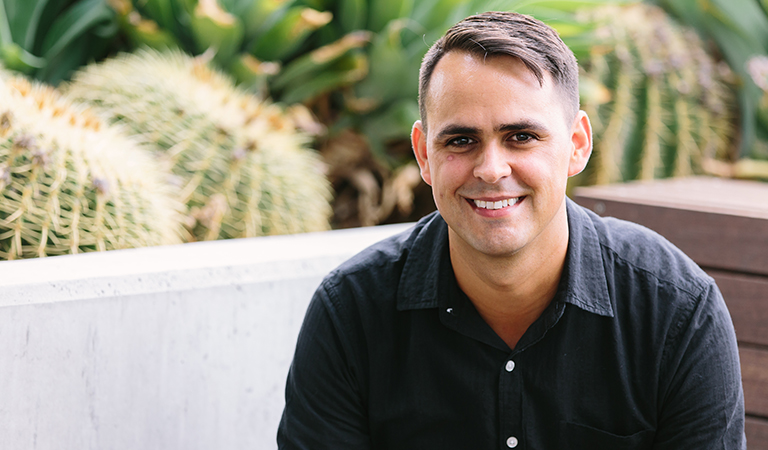NSF Supports Extracellular Vesicle Biogenesis Research
March 14, 2023
The National Science Foundation (NSF) is supporting an exciting interdisciplinary project at Harvey Mudd College that will enhance the understanding of cell communication.
Engineering professor Steven Santana ’06 and his students will employ learning from across STEM fields, including engineering, biology, chemistry and materials science, to enhance the understanding of cell communication through extracellular vesicles. The goal of the project, “BRC-BIO: Interrogating Extracellular Vesicle Biogenesis Through Substrate-Associated Signals,” is to create knowledge about extracellular vesicle production in astrocytes (a cell type found in the central nervous system) in response to tissue stiffness and integrin engagement.
“Think of an extracellular vesicle (EV) like a tiny, specially-wrapped package that cells send out to talk to each other,” explains Santana, who directs the Engineering Clinic Program. “These little packages are made up of a special protective envelope and can contain important things like nucleic acids, proteins and fats. When a cell gets a package like this, it can change the way it acts. Extracellular vesicles are kind of like messengers who broadcast instructions that help cells work together for good, like when your body defends itself from a disease, or for ill, when co-opted by cancer.”
HMC students will lead the research, including culturing cells, isolating and interrogating EVs, designing experiments, analyzing data, writing it up and presenting it. “Through the use of tissue-engineered substrates, student researchers will engage astrocytes and study their vesicle production. This will help us to shed light on the fundamentals of cell-cell communication,” Santana says.
With a focus on creating knowledge about the role played by integrin-substrate interactions and substrate stiffness on extracellular vesicle biogenesis, HMC researchers have the potential to create new knowledge in STEM fields and inform the development of vesicle-based therapeutics.
This project also represents a remarkable opportunity for students to make a meaningful contribution to the scientific and engineering communities. In addition to HMC students, researchers will include high school students from HMC’s Upward Bound program and from the Pomona Unified School District.
Santana’s work at HMC focuses on several areas, including uncovering the biogenesis of extracellular vesicles and designing materials and methods for fabricating biomimetic tissues. Beyond his bench top work, Santana is active in engineering education research with a focus on the learning, identity development and belonging of students in early and late-career project-based courses. He has taught across the curriculum in engineering design, engineering sciences and has created and redesigned upper-division technical electives.
